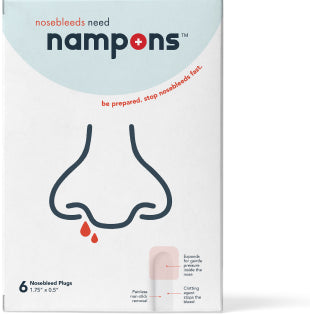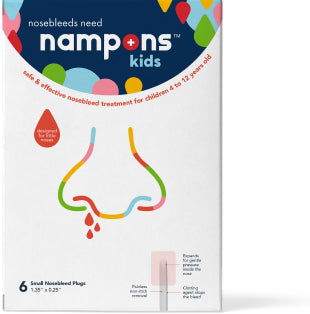Nampons can help you to stop nosebleeds and bring everything under control, but what about preventing those blood vessels from rupturing in the first place? For that, you could use a little nasal saline spray.
Using Nasal Spray to Stop Nosebleeds
The most common type of nosebleed is something known as an anterior nosebleed, which occurs in the front of the nose. The nasal septum, which separates the nostrils, is covered with tiny blood vessels and when these are damaged, they rupture and bleed.
By avoiding forceful nose blowing and vigorous nose picking, you can greatly reduce the risk of a nosebleed.
Nasal dryness is not as easy to control but can be just as problematic, causing the delicate membranes to crack.
That's where nasal saline spray comes in. A little squirt up both of your nostrils will keep your nose moist and prevent damage.
Don't get carried away—a few times a day will suffice and should provide the protection that you need.
It's just like using moisturizer on your hands or face when your skin becomes dry and flaky.
Petroleum jelly can help, as well. Just apply it to the lower part of your nose using your finger or a cotton swab.
You can still blow your nose and you don't need to worry about sneezing. The spray will just ensure that the septum wall is moist, the blood vessels are protected, and the risk of nosebleeds is reduced.
Can You Use Nasal Spray to Stop Nosebleeds?
A saline spray won't help you much if you're trying to stop a nosebleed, but you don't need it!
Just pinch the soft part of your nose (below the bony bridge) using your thumb and index finger, sit down, lean forward, and maintain pressure for at least 5 minutes.
Breathe through your mouth throughout this time and, whatever you do, don't release the pressure just to see if the nosebleed has stopped! It's just opening the oven door to check on a souffle—as soon as you do it, all that hard work will be undone and you'll have to start again.
That should be enough to stop the bleeding. You can also place an ice pack (wrapped in a towel) over the bridge of your nose. It will help to constrict the blood vessels and stop the bleeding.



